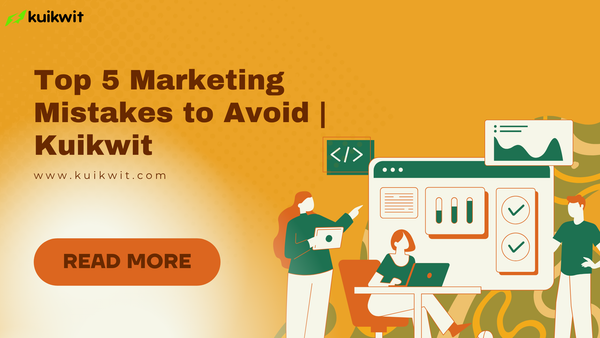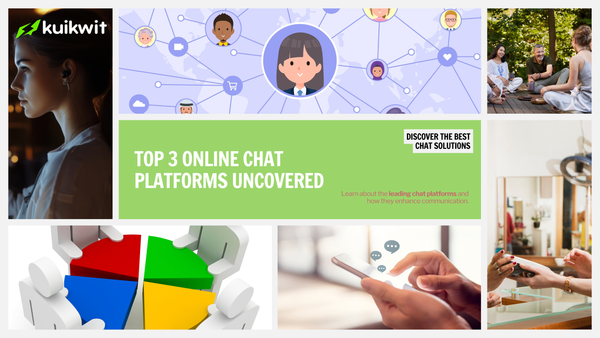Boosting Sales Through Better Messaging Strategies | Kuikwit Guide
Discover how better messaging strategies boost sales and customer loyalty. Learn proven tactics, personalization tips, and how Kuikwit simplifies omnichannel messaging.

Imagine this: A customer visits your online store, adds products to the cart, but leaves before checking out. You send a polite follow-up message, reminding them of the items waiting. Within minutes, they return and complete the purchase.
What made the difference? Not discounts. Not ads. It was a better messaging strategy one that spoke to the customer at the right time, in the right way.
In today’s fast-paced digital world, messaging has become the bridge between businesses and customers. The businesses that master messaging see stronger relationships, higher engagement, and a direct boost in sales. Let’s explore how you can do the same.
Why Messaging Matters in Sales
A recent study by Twilio showed that 9 out of 10 consumers want to message with brands. Customers no longer want long phone calls or generic emails—they expect quick, personalized conversations.
Better messaging strategies help businesses:
- Build trust by being responsive and approach--able.
- Nurture leads with timely reminders and follow-ups.
- Convert faster by addressing concerns in real time.
- Retain customers with ongoing support and engagement.
When done right, messaging is not just customer service—it’s a sales powerhouse.
Core Elements of a Better Messaging Strategy
To boost sales, businesses need more than quick replies. They need a structured strategy that combines consistency, personalization, and technology. Here are the key elements:
1. Personalization First
Generic messages don’t grab attention. Personalized messages, however, feel like a one-on-one conversation. Using the customer’s name, referencing their past purchases, or recommending products based on behavior can significantly increase conversions.
Example: Instead of “Your cart is waiting,” say, “Hi Sarah, your favorite shoes are still in your cart. Want us to save them for you?”
2. Omnichannel Communication
Your customers don’t stick to one channel—they move between email, social media, WhatsApp, and live chat. A unified messaging hub like Kuikwit helps you manage all channels in one place, so no customer feels ignored.
3. Timing Is Everything
The right message at the wrong time doesn’t work. For example, following up immediately after cart abandonment can win sales, while waiting 24 hours might be too late.
Use analytics and automation to send timely, relevant messages that push the customer closer to buying.
4. Clear Call-to-Action (CTA)
Every message should guide the customer toward the next step—whether it’s visiting the website, booking a demo, or completing a purchase. Keep CTAs short, direct, and benefit-focused.
Example: “Tap below to unlock your discount and complete your order today.”
5. Balance Between Automation and Human Touch
Automation is great for FAQs, order updates, and reminders. But when a customer has a unique problem, a human agent should step in. This balance keeps communication fast without feeling robotic.
5 Messaging Strategies That Boost Sales
Now let’s get practical. Here are five proven strategies businesses can adopt to drive sales through messaging:
1. Abandoned Cart Recovery Messages
Cart abandonment rates are as high as 70% (Baymard Institute). A quick reminder via chat or SMS can bring customers back. Offering a small incentive (like free shipping) often seals the deal.
2. Product Recommendations
AI-driven suggestions based on past purchases or browsing history work wonders. Messaging platforms can send, “Since you bought X, you might love Y.” Personalized upsells often increase average order value.
3. Exclusive Offers via Messaging
Make customers feel special by offering limited-time discounts or early access to sales. Exclusive deals delivered through messaging drive urgency and loyalty.
4. Proactive Support Messages
Instead of waiting for customers to reach out, check in with them first. For example, after shipping a product, send a message like: “Hi John, your order has been delivered. Do you need help setting it up?” This builds trust and opens doors for cross-selling.
5. Feedback and Engagement Messages
Asking for feedback through messaging shows customers you care. Positive feedback can be turned into testimonials, while constructive criticism gives you insights to improve. Engaged customers are more likely to buy again.
Role of Technology in Messaging Success
Without the right tools, even the best strategy will fail. Platforms like Kuikwit (your all-in-one messaging hub) provide:
- Omnichannel inbox to manage all platforms together.
- Templates and automation for quick, consistent replies.
- Analytics to track performance and customer behavior.
- Team collaboration to ensure no customer slips through.
By simplifying communication, tools like Kuikwit help businesses focus on relationships rather than chasing messages across apps.
The Sales Impact of Better Messaging
Here’s what studies reveal about the sales benefits of effective messaging:
- 64% of customers are more likely to make a purchase if businesses respond in real time (Salesforce).
- Businesses that use messaging apps see up to 3x more engagement compared to traditional channels (Twilio).
- Personalization in messaging can increase sales by 10–15% (McKinsey).
Clearly, better messaging strategies directly drive revenue.
Conclusion
Boosting sales is not just about marketing campaigns or discounts it’s about how well you communicate with customers. Better messaging strategies make customers feel heard, valued, and understood. From cart recovery to personalized offers, every message is an opportunity to drive sales and build loyalty.
With the right approach and the right tools like Kuikwit (your all-in-one messaging hub) businesses can turn everyday conversations into lasting revenue.
So, the question is: Are your messaging strategies designed to simply reply, or to truly boost sales?




